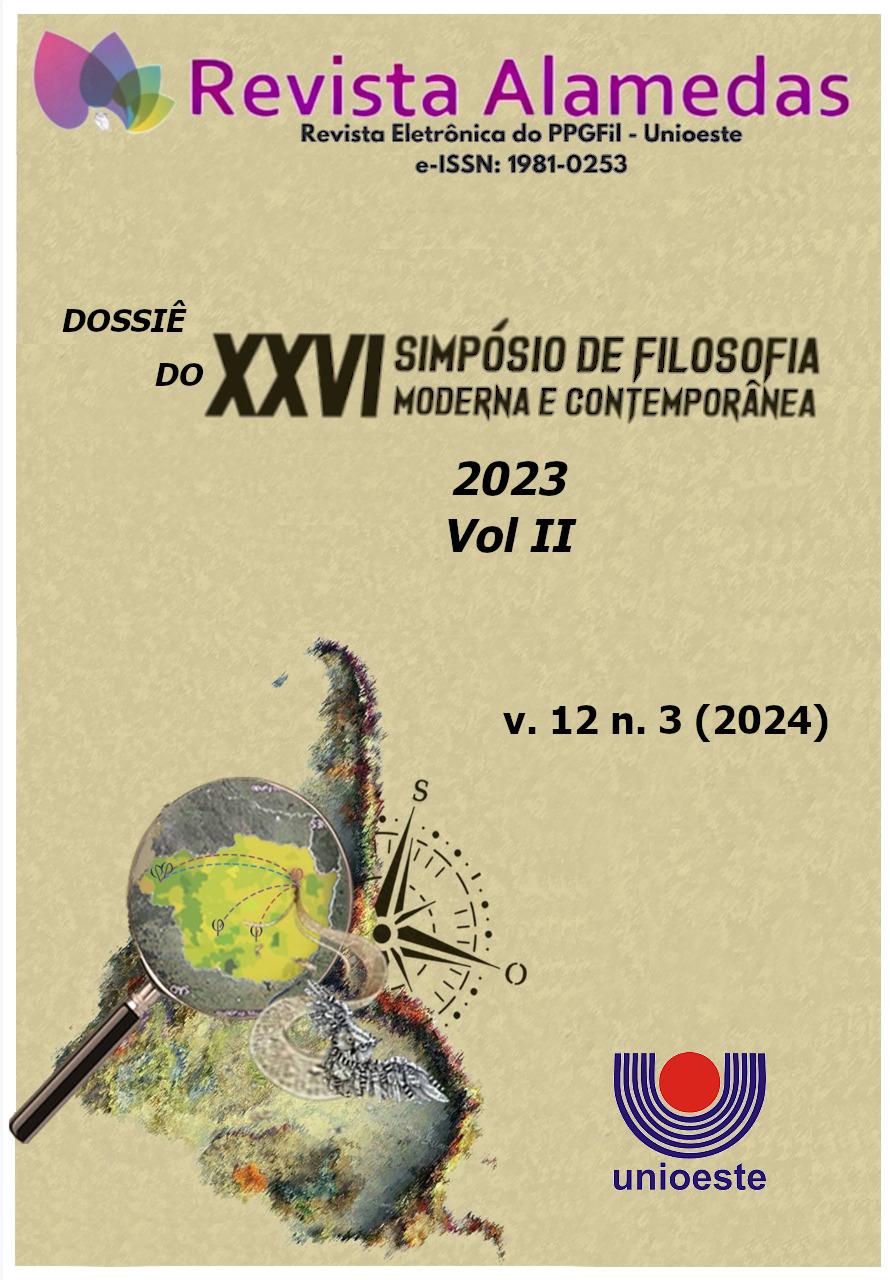Sob o sol do dasein
a descoberta do ser-aí na teologia da esperança
DOI:
https://doi.org/10.48075/ra.v12i3.33070Palavras-chave:
Jürgen Moltmann, Martin Heidegger, Hermenêutica da Facticidade, Teologia da EsperançaResumo
A partir da análise das concepções de Martin Heidegger sobre a hermenêutica da facticidade, é possível perceber uma convergência entre a hermenêutica da facticidade e a teologia da esperança de Jürgen Moltmann, no que se refere ao sentido existencial da esperança em meio à experiência do sofrimento humano. Nesse sentido, é relevante compreender qual é o ser-aí da teologia da esperança de Moltmann. Este artigo tem como propósito analisar as perspectivas de Jürgen Moltmann e Martin Heidegger sobre a teologia da esperança e a hermenêutica da facticidade, com o intuito de compreender o sentido ontológico da esperança. Para isso, será necessário descrever brevemente a hermenêutica da facticidade de Heidegger, suas principais contribuições à filosofia e à teologia da esperança, particularmente o ser-aí enquanto ser-no-mundo. Apresentar a teologia da esperança e a trajetória pessoal de seu autor, Jürgen Moltmann, bem como a experiência concreta do cativeiro como prisioneiro de guerra e a esperança, fruto de experiências de sofrimento. Analisar a influência do filósofo Ernst Bloch sobre a construção da teologia da esperança e a convergência com a hermenêutica proposta por Heidegger. Por fim, explorar, a partir do sentido ontológico proposto por Heidegger, o caminho da esperança até dasein, em um mundo cada vez mais sensível às contradições humanas. Entender como a angústia humana também é fomentadora da esperança contribui para a promoção do diálogo dos aparentemente antagônicos aspectos da vida humana, como a experiência da perseguição e da liberdade, da fome e da abundância, da morte e da vida. A pesquisa pode destacar como as ideias de Heidegger e Moltmann podem contribuir para isso. A interação entre filosofia e teologia nessas discussões promove um rico diálogo interdisciplinar, que pode oferecer novas perspectivas sobre questões antigas relacionadas à esperança e ao sofrimento humano. Heidegger e Moltmann são figuras proeminentes em seus respectivos campos, e explorar suas ideias sobre esperança e dasein pode contribuir significativamente para a teologia e a filosofia contemporânea, especialmente no que diz respeito às experiências críticas que fazem o homem sofrer e questionar o sentido delas. Em um momento em que as sociedades estão cada vez mais sujeitas ao sofrimento, em decorrência de inúmeras causas, econômicas, políticas e sociais, compreender o pensamento de Heidegger e Moltmann para uma hermenêutica da esperança pode oferecer caminhos para superar problemas e fomentar não só a esperança, mas os caminhos para compreender o sentido da existência do homem sofredor, além da experiência do sofrimento. A análise das visões de Moltmann e Heidegger revelará que suas abordagens em relação à angústia e esperança são convergentes; ambos oferecem perspectivas complementares, que podem contribuir para a compreensão existencial da teologia da esperança. Enquanto Heidegger propõe uma forma inédita de compreensão, atenta ao sentido existencial do ser inserido no mundo, Moltmann destaca o valor intrínseco do sofrimento e da tradição religiosa como componentes essenciais para a promoção da esperança. Esta complementaridade pode oferecer uma base mais rica e inclusiva para o diálogo e a coesão social em sociedades contemporâneas.
Downloads
Publicado
Como Citar
Edição
Seção
Licença
Copyright (c) 2024 Alamedas

Este trabalho está licenciado sob uma licença Creative Commons Attribution-NonCommercial-ShareAlike 4.0 International License.
Aviso de Direito Autoral Creative Commons
Política para Periódicos de Acesso Livre
Autores que publicam nesta revista concordam com os seguintes termos:
1. Autores mantém os direitos autorais e concedem à revista o direito de primeira publicação, com o trabalho simultaneamente licenciado sob a Licença Creative Commons Attribution que permite o compartilhamento do trabalho com reconhecimento da autoria e publicação inicial nesta revista.2. Autores têm autorização para assumir contratos adicionais separadamente, para distribuição não-exclusiva da versão do trabalho publicada nesta revista (ex.: publicar em repositório institucional ou como capítulo de livro), com reconhecimento de autoria e publicação inicial nesta revista.
3. Autores têm permissão e são estimulados a publicar e distribuir seu trabalho online (ex.: em repositórios institucionais ou na sua página pessoal) a qualquer ponto antes ou durante o processo editorial, já que isso pode gerar alterações produtivas, bem como aumentar o impacto e a citação do trabalho publicado (Veja O Efeito do Acesso Livre).
Licença Creative Commons
Esta obra está licenciada com uma Licença Creative Commons Atribuição-NãoComercial-CompartilhaIgual 4.0 Internacional, o que permite compartilhar, copiar, distribuir, exibir, reproduzir, a totalidade ou partes desde que não tenha objetivo comercial e sejam citados os autores e a fonte.


